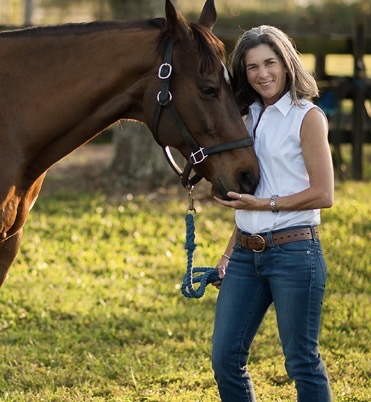News, ideas & inspiration from industry leaders

Shelterer or Rehomer?
Which one are you?

There is one shift that can make all the difference for increasing live outcomes and supporting more at-risk animals. It is a philosophical shift from keeping animals safe and stress-free in a shelter to moving animals safely and humanely from the shelter to the home.
Years ago I wrote a blog post, “Stop Walking the Dog!,” about shifting shelter protocols from having staff or volunteers take dogs on long walks to instead taking them on short potty breaks. The aim of this shift is two-fold: Dogs are taught a vital skill for good rehoming, and it opens up resources for all dogs to have more enrichment points throughout the day. Not surprisingly, this post received a lot of passionate responses, and one of them I have kept on a post-it note all these years. It reads:
“This article makes it sound like the whole point of a shelter is to move dogs out (get adopted) as quickly as possible. What does this do for the dog?”
The person who wrote this comment is a shelterer. Their focus is not on getting the animal out of the shelter as quickly as possible, but instead on how we impact the animal while in shelter. A shelterer focuses the limited resources the shelter has on programs and processes that are aimed at doing things that we hope make the dogs and cats feel better, but may either have no impact on getting him home, or might even decrease it.
A rehomer, on the other hand, stacks more resources on programs and processes that will increase the likelihood that dog or cat goes home today. Rehomers understand that keeping length of stay low means more animals in the community can be helped, and that capacity within the shelter walls is more manageable as care days are reduced.
Digging in to the details, a shelterer is likely to have a lengthy adoption application that includes questions aimed to “weed out” potential adopters. The application often includes policies that would limit adoption – requiring fences, previous experience, vet references, home visits, dog introductions in shelter, etc. A rehomer has recognized that the person coming through their doors is someone who will be getting a pet – be it from your facility or somewhere else. A rehomer aims to help assure success for that potential adopter and the community’s animals by finding them a great match, developing a respectful relationship, and staying in touch once the pet goes home.
Both shelterers and rehomers recognize the importance of supporting a pet’s mental and physical health. But shelterers focus mitigation within the shelter walls, while rehomers develop plans that minimize length of stay.
Let’s take the activity of play groups as an example. Both shelterers and rehomers may implement play groups, but the shelterer is more likely to bring dogs into a back area for play groups, pulling the dogs off the adoption floor and away from potential homes. A rehomer makes sure to have those play groups front and center, where adopters can not only see the dogs engaging with other dogs, but they can engage with staff who are trained in matchmaking and client services to learn more about those dogs. The play groups serve as adoption opportunities, and dogs may not have to ever go back into those kennels because they meet their match!
And circling back to those long dog walks. A shelterer will take dogs on long, exploratory walks. This may sound pretty good at first, but think about the full impact. While the dog is on a walk, they are not visible to adopters. And as there are only so many people available for walking and enrichment, long walks for a few dogs means fewer enrichment opportunities for all dogs overall. And because fewer dogs will get out of their kennels, there is a higher likelihood of urine or feces in the kennel run – a sure turn-off for most adopters.
A rehomer will focus on short potty breaks for all dogs in shelter. During those quick potty breaks, they will be teaching the dogs to urinate and defecate on cue (scroll down to see protocol below if you are interested in how to do this). These short potty breaks teach the dogs an incredibly valuable behavior for adopters (potty on cue), and gives the dogs more learning opportunities in the day, including going through doors politely and walking calmly on leash. This system also increases the likelihood the kennel run will be clean, and puts more adopter and staff eyes on each dog multiple times a day. And how about increasing the likelihood an adopter will be able to meet a dog on their way in or out from their potty break?!
Question – would you have your dog spend a few weeks in your shelter? I have asked this question of shelter staff and volunteers around the country, and have yet to have someone take me up on it. If we do not find the shelter to be a good place for our own dogs and cats, shouldn’t we be doing everything in our power to assure the dogs and cats in the shelter stay there for the shortest time?
Most shelters are stressful environments for dogs and cats. There are things we can and should do to mitigate the stress, but the best way to relieve the stress is to be a rehomer and get the pet a home today.
What do you think?
Potty on Cue protocol
This protocol is a quick and easy one to employ, and sending dogs home with this skill is a great way to strengthen the bond and increase success.
Take the dog out to the preferred potty spot and when the dog begins to “assume the position,” softly and clearly say the cue and repeat until the deed is done. Common cues are “park” for urination and “hurry” for defecation, but you can use whatever you want, so long as the cues are consistent. When she is done with her business, follow with some soft and calm praise and a small food reward. After 4 or so pairings, when the dog is assuming the position, shift to saying the cue when you are in a spot where you would like the dog to do his business. Dogs should be taken out for potty breaks at least 3x a day when in the shelter. Be sure that all who walk dogs in your shelter employ these cues and add a demonstration for the adopter, along with a small handout so that they can reference it when they go home.


